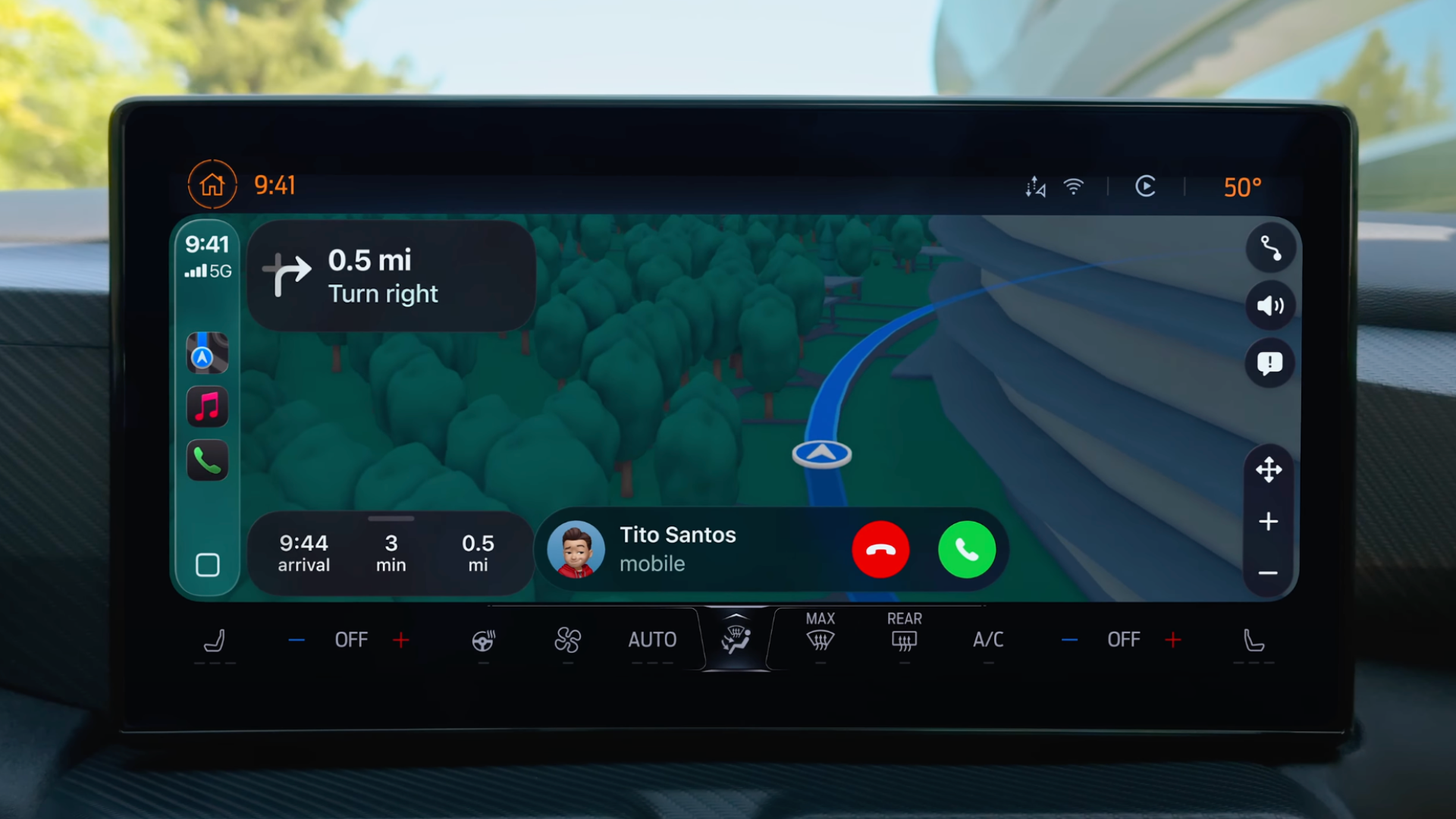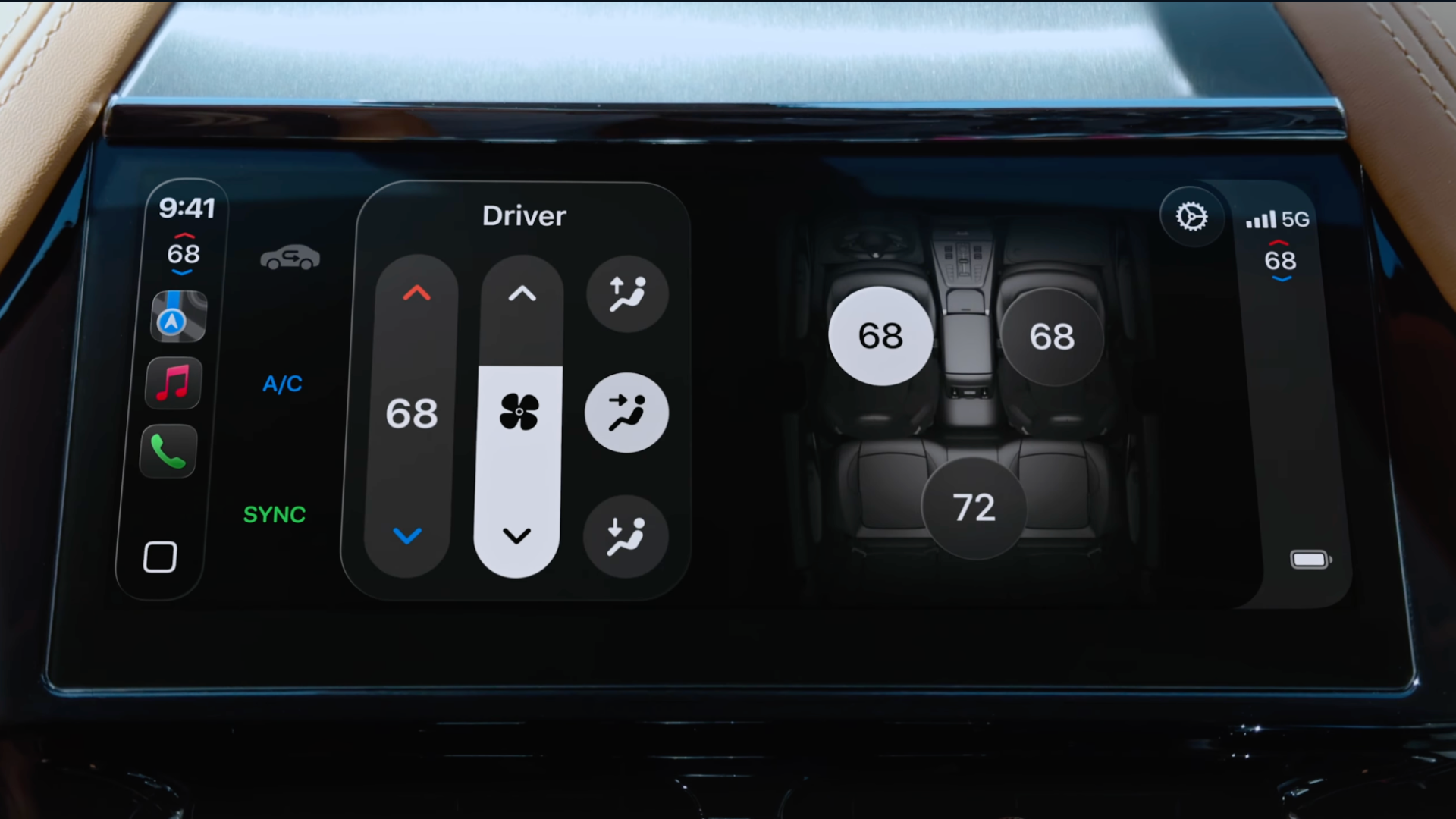At WWDC 2025, Apple unveiled iOS 26 and, along with it, the new CarPlay features that will change the way you interact with the in-car information system forever. The improved CarPlay will be available for supported iPhone users later this year, alongside the public release of iOS 26.
CarPlay Gets Liquid Glass Design
With iOS 26, the new Liquid Glass design extends into your car’s infotainment screen, providing a consistent experience across all platforms. It will bring changes like translucent and reflective layers in the user interface, rounder edges for widgets, and a glass-like aesthetic, similar to iOS 26.
The icons, such as those for apps like Phone, Music, Maps, Messages, and Podcasts, appear more vibrant (and have rounder edges) in both light and dark modes. The background, as seen in the few glimpses shown by Apple, looks similar to the blue-themed iOS 26 background.
CarPlay Calls Don’t Occupy the Entire Screen Anymore
Until now, incoming CarPlay calls showed up on the entire screen, momentarily distracting the driver from the ongoing navigation. However, with the new CarPlay update, they’ll appear in a much more compact format (similar to how they display on an iPhone when in use).
Suppose you’ve maximized navigation to the entire display; an incoming call will only show up as a horizontal bar at the bottom of the infotainment screen, displaying the caller’s name and accept/reject buttons. This way, you should still be able to see what’s on the screen.
Reactions and Pinned Conversations in Messages
iOS 26 also introduces tapbacks in CarPlay, a clever way to respond to incoming messages with an emoji (similar to message reactions on iOS), such as a heart, thumbs up, thumbs down, or a question mark. For instance, if your friend has already arrived at the café you decided to meet at and texts you an “I’m there,” you can simply tap the thumbs-up option.
In addition to tapbacks, Messages in CarPlay also gets pinned conversations, so you don’t have to scroll endlessly to locate the chat with your loved ones. You can simply pin the contact in Messages, and whenever you open the app, they’ll appear at the top, with a blue dot below them if the conversation has a fresh message for you to read.
iOS 26 also brings widgets to the CarPlay screen, providing a quick way to glance at important information, such as reminders in the calendar widget, switches for the connected smart home, and checking the weather, among others.
Apple is also bringing Live Activities, a popular feature from the iPhone, to CarPlay. It will display the status of ongoing processes, such as a flight or food delivery, without the hassle of reaching for your phone, unlocking it, and opening the required app (which isn’t safe while driving).
For developers, Apple has announced that widgets and Live Activities developed for the iPhone will also work on CarPlay.
CarPlay Ultra Will Also Get These Updates
All the updates, including the new compact call notification, Tapbacks, pinned conversations, widgets, Live Activities, and the iOS 26-inspired design, are also coming to CarPlay Ultra.
While the advanced CarPlay user interface is only available on the latest Aston Martin vehicles in the United States, it should be expanded to other global markets over the next year. Among other automakers working on integrating CarPlay Ultra are Hyundai, Kia, Audi, Ford, and Porsche.
For those catching up, CarPlay Ultra is an enhanced version of CarPlay that takes over the driver information screen (the screen with the speedometer, fuel meter, trip distance, and more) and showcases all the vital details, along with information from their iPhone, as if it were a part of the car’s native operating system.
Furthermore, it enables drivers to access the car’s vital functions, including climate control, heated and ventilated seats, performance settings, and radio, all with on-screen controls or hands-free via Siri. While CarPlay Ultra has yet to roll out to the masses, Apple’s promotional material suggests an iOS 26-inspired design.
Wish to know about new features coming to iPadOS 26 this fall? Check out this article. Curious about why Apple moved to years and not numbers for iOS version names? Here are a few solid reasons.



